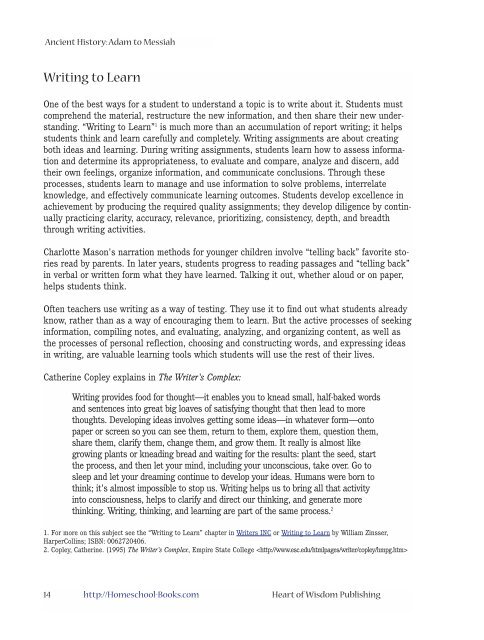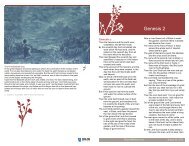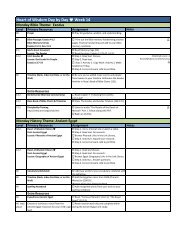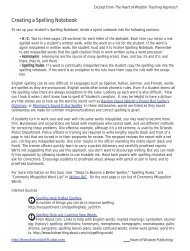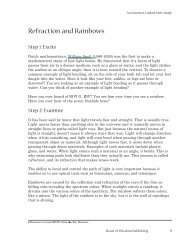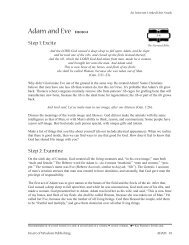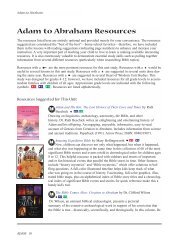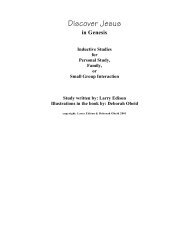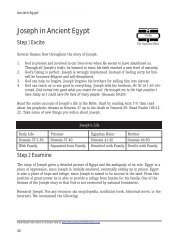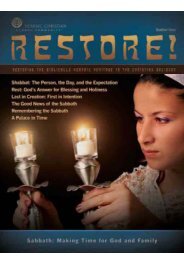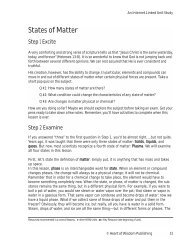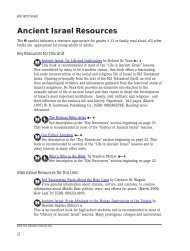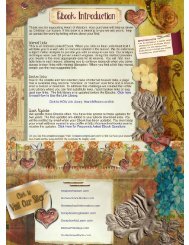Book Excerpt ( 42 pages!) - Heart of Wisdom
Book Excerpt ( 42 pages!) - Heart of Wisdom
Book Excerpt ( 42 pages!) - Heart of Wisdom
Create successful ePaper yourself
Turn your PDF publications into a flip-book with our unique Google optimized e-Paper software.
Ancient History: Adam to MessiahWriting to LearnOne <strong>of</strong> the best ways for a student to understand a topic is to write about it. Students mustcomprehend the material, restructure the new information, and then share their new understanding.“Writing to Learn” 1 is much more than an accumulation <strong>of</strong> report writing; it helpsstudents think and learn carefully and completely. Writing assignments are about creatingboth ideas and learning. During writing assignments, students learn how to assess informationand determine its appropriateness, to evaluate and compare, analyze and discern, addtheir own feelings, organize information, and communicate conclusions. Through theseprocesses, students learn to manage and use information to solve problems, interrelateknowledge, and effectively communicate learning outcomes. Students develop excellence inachievement by producing the required quality assignments; they develop diligence by continuallypracticing clarity, accuracy, relevance, prioritizing, consistency, depth, and breadththrough writing activities.Charlotte Mason's narration methods for younger children involve “telling back” favorite storiesread by parents. In later years, students progress to reading passages and “telling back”in verbal or written form what they have learned. Talking it out, whether aloud or on paper,helps students think.Often teachers use writing as a way <strong>of</strong> testing. They use it to find out what students alreadyknow, rather than as a way <strong>of</strong> encouraging them to learn. But the active processes <strong>of</strong> seekinginformation, compiling notes, and evaluating, analyzing, and organizing content, as well asthe processes <strong>of</strong> personal reflection, choosing and constructing words, and expressing ideasin writing, are valuable learning tools which students will use the rest <strong>of</strong> their lives.Catherine Copley explains in The Writer's Complex:Writing provides food for thought—it enables you to knead small, half-baked wordsand sentences into great big loaves <strong>of</strong> satisfying thought that then lead to morethoughts. Developing ideas involves getting some ideas—in whatever form—ontopaper or screen so you can see them, return to them, explore them, question them,share them, clarify them, change them, and grow them. It really is almost likegrowing plants or kneading bread and waiting for the results: plant the seed, startthe process, and then let your mind, including your unconscious, take over. Go tosleep and let your dreaming continue to develop your ideas. Humans were born tothink; it's almost impossible to stop us. Writing helps us to bring all that activityinto consciousness, helps to clarify and direct our thinking, and generate morethinking. Writing, thinking, and learning are part <strong>of</strong> the same process. 21. For more on this subject see the “Writing to Learn” chapter in Writers INC or Writing to Learn by William Zinsser,HarperCollins; ISBN: 0062720406.2. Copley, Catherine. (1995) The Writer's Complex, Empire State College 14 http://Homeschool-<strong>Book</strong>s.com <strong>Heart</strong> <strong>of</strong> <strong>Wisdom</strong> Publishing


